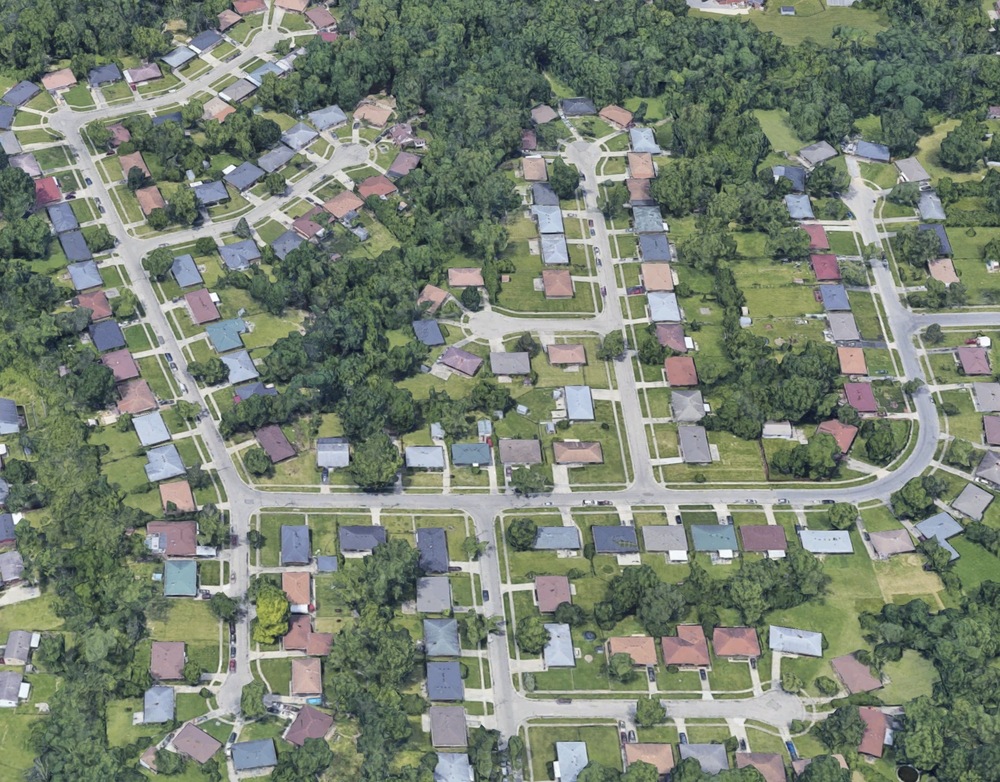Skyline Acres
“The most spectacular case of blockbusting.”

Skyline Acres advertised its grand opening in August 1957. The new subdivision, just outside North College Hill, was marketed as an affordable option for WWII veterans eligible for loans through the GI Bill. The subdivision was, initially, all-white.
Sometime in the mid-1960’s, a single Black family moved in. Local real estate agents understood that this event made the development ripe for blockbusting – a process by which realtors would aggressively approach white homeowners to tell them that their property values would soon go down because of encroaching African Americans, thus convincing the homeowners to “get out while you can” by selling at a loss.
The realtors could then purchase these properties and re-sell them to Black families at a steep markup. By churning through the sales of dozens or even hundreds of houses in a short span of time, blockbusting could be fantastically profitable for the realtors.
After the 1968 Civil Rights Act, overt blockbusting was illegal. But as long as the realtor didn’t specifically mention race, the realtor could still distribute flyers asking, “Aren’t you ready to sell yet,” and it would be impossible for authorities to take legal action.
Blockbusting affected many Cincinnati neighborhoods. By 1966, there had been serious complaints of blockbusting in Bond Hill, Roselawn, College Hill, Evanston, and North Avondale. Still, Skyline Acres stood out for the speed at which the process unfolded. The Cincinnati Enquirer for August 3, 1969 reports,
“Skyline Acres is a cluster of pleasant homes … a little northwest of North College Hill. James Johnson, a Negro carpet salesman interested in bringing about amity between the races, moved in with his wife and two children a year ago. Although the blockbusters had begun their work, he had hopes that the neighborhood might remain integrated. That was not to be. Today, less than a year later, a few white families remain in Johnson’s neighborhood. All have “for sale” signs on their lawns.”
This article notes that Marjorie Jordan, executive director of a group called Housing Opportunities Made Equal (HOME), had been watching Skyline Acres for several years. She called it the “most spectacular” case of block busting in her files.
Racial tensions have long clouded community discussions in this neighborhood. Skyline Acres is a somewhat densely developed neighborhood, so in the 1970’s, Black residents lobbied to get a park. In 1975, $300,000 in government funding was allocated for this purpose. But residents of the nearby Hillwood subdivision opposed the park, claiming that it would attract crime and lower their property values.
In 1978, a local community activist named Bettie Strum spoke to a reporter from the Cincinnati Enquirer. Strum scoffed at the stated concerns of Hillwood residents. “The crime rate at Skyline Acres is among the lowest in the township,” Strum said. “We’re going into our fourth year now and the reason we don’t have a park is because of racial reasons. Some residents of Hillwood subdivision don’t want the park because black kids will be playing in it. … Of course, nobody is going to admit that publicly. But when I moved into Skyline seven years ago, it was 25% black and now it’s 95% black. Draw your own conclusions.”
Images
